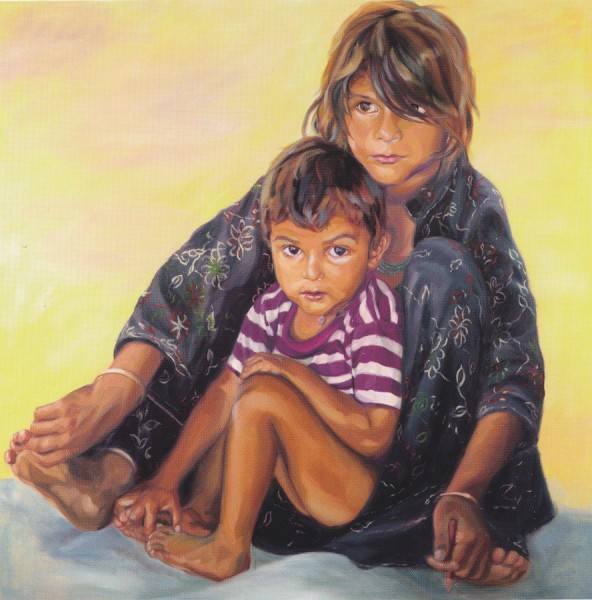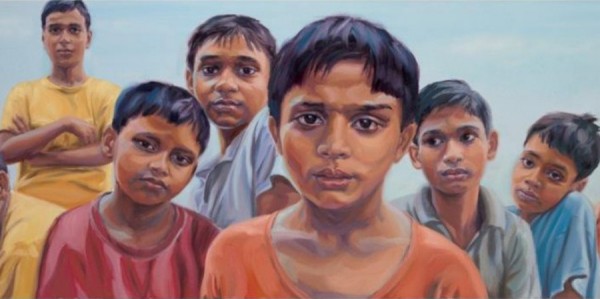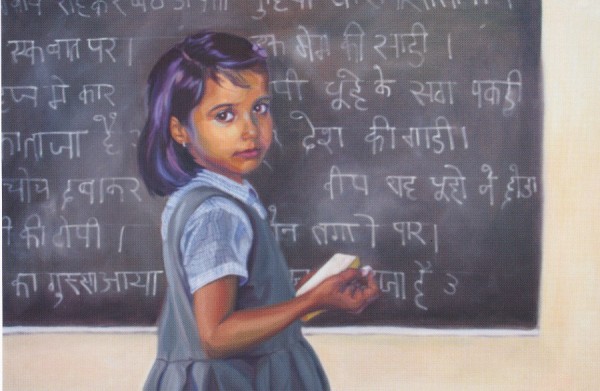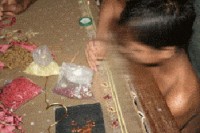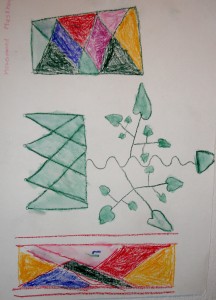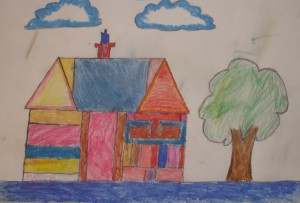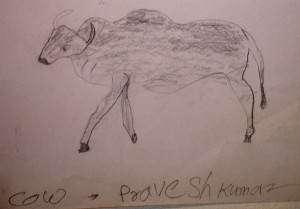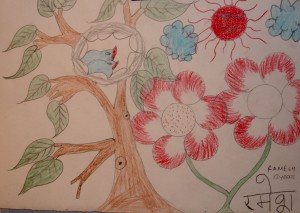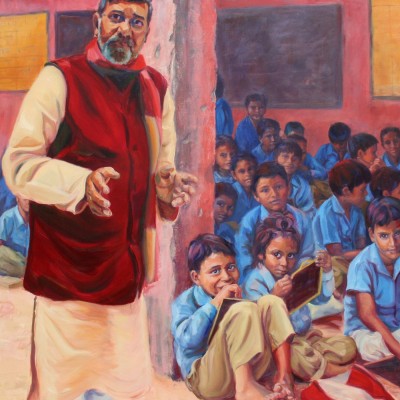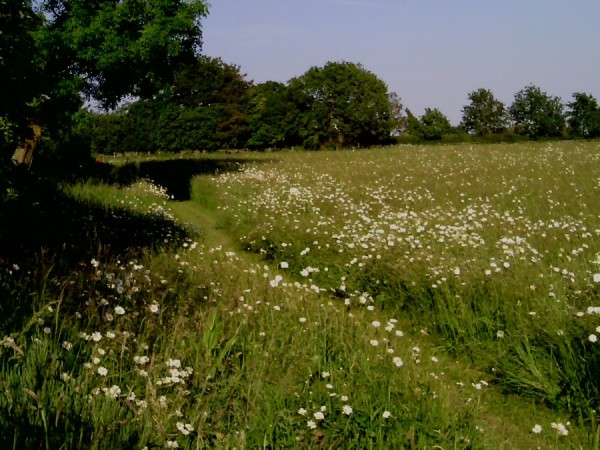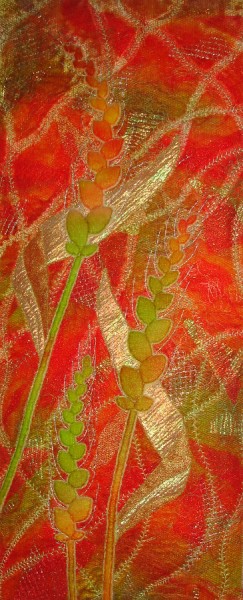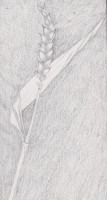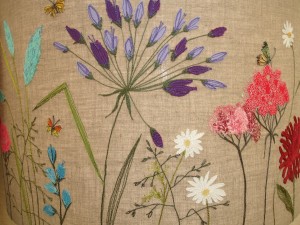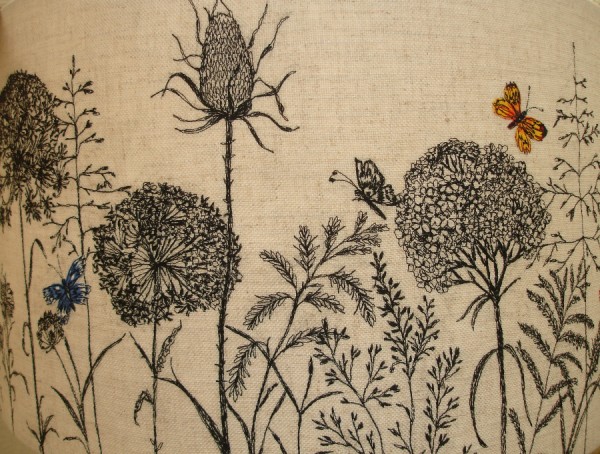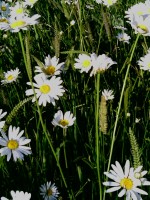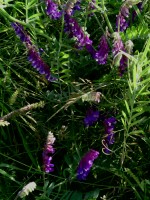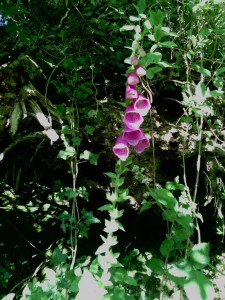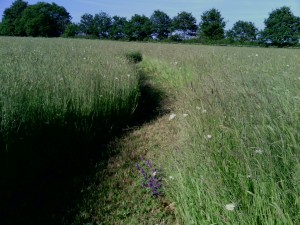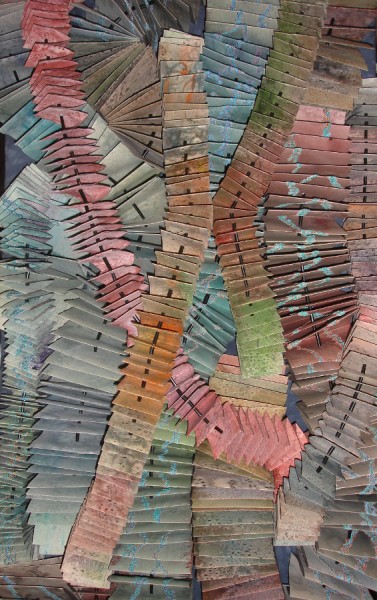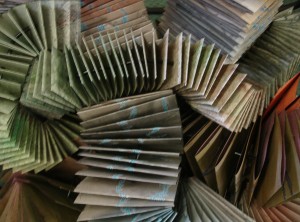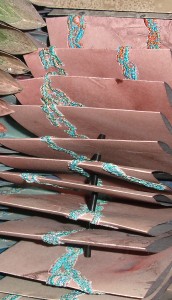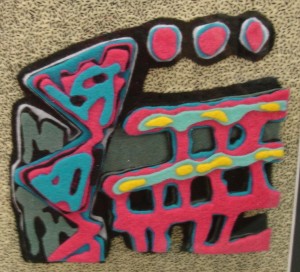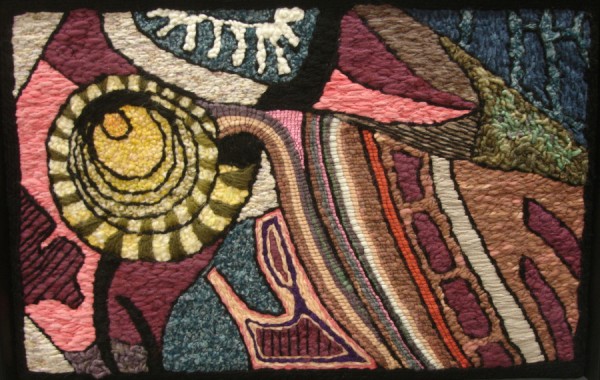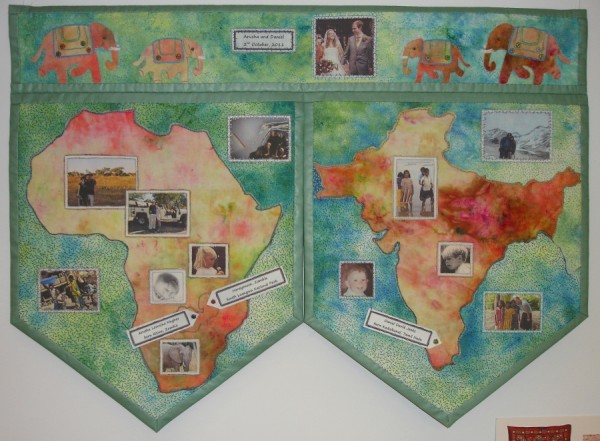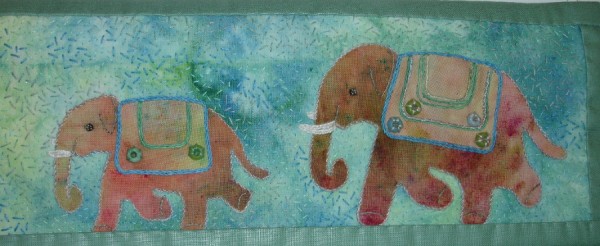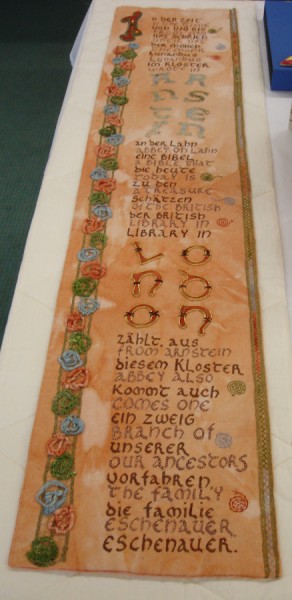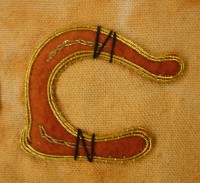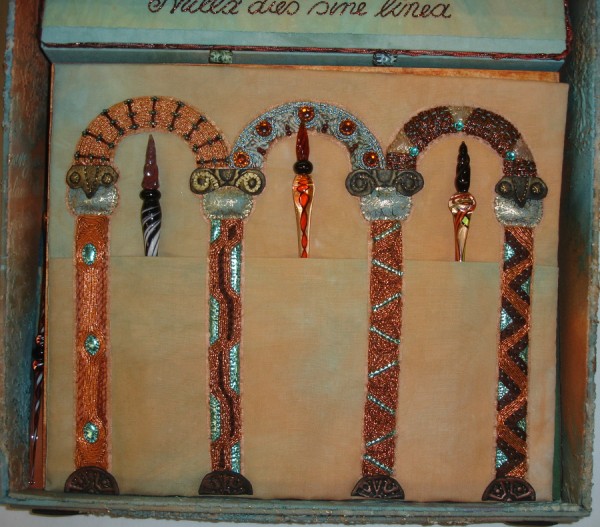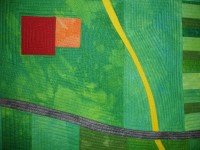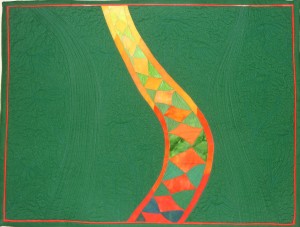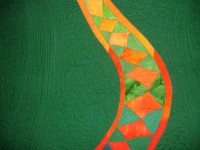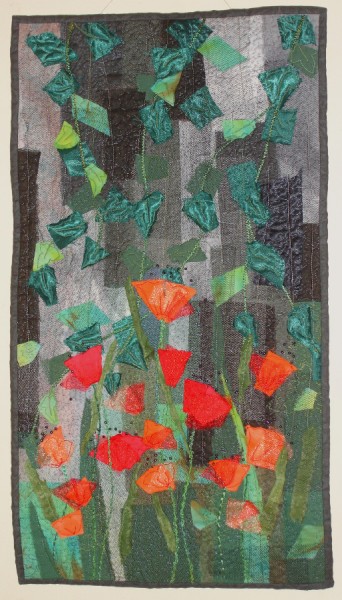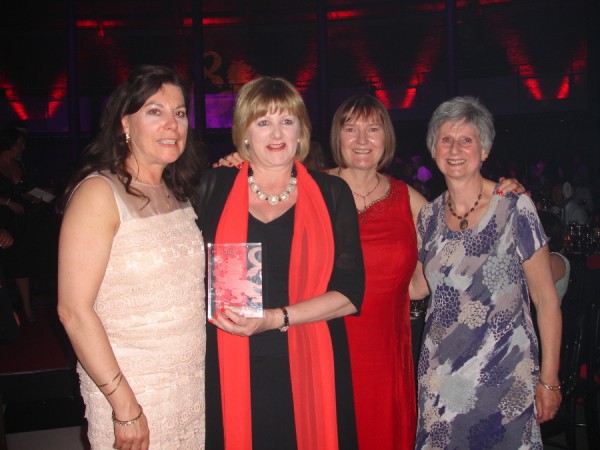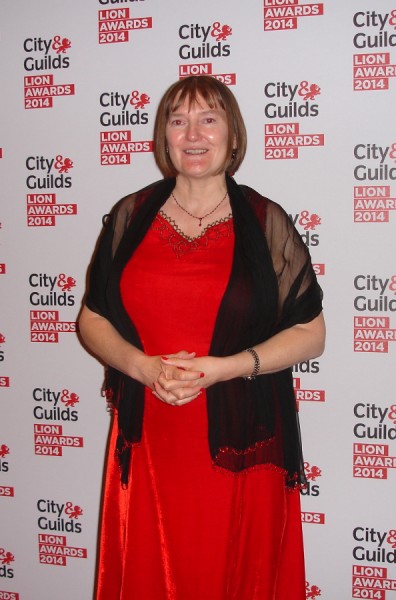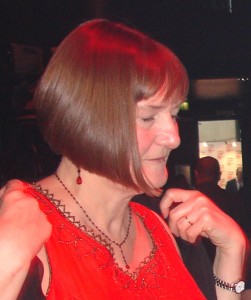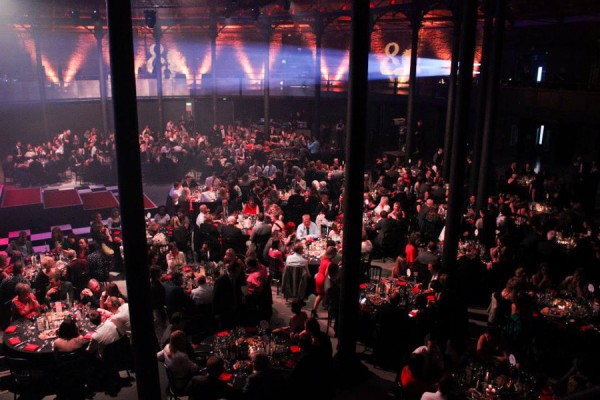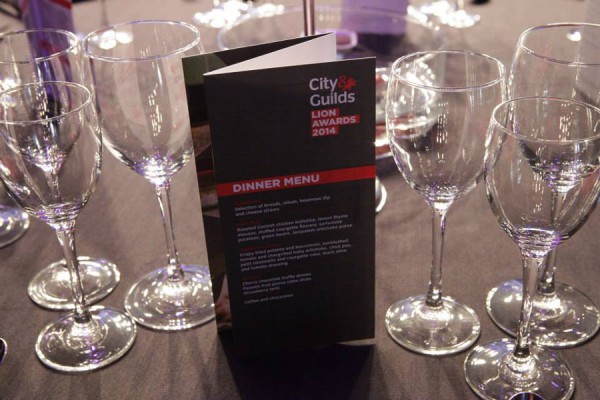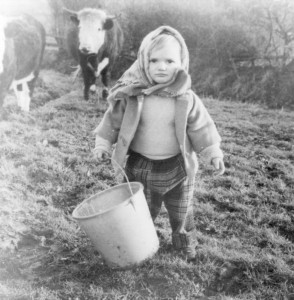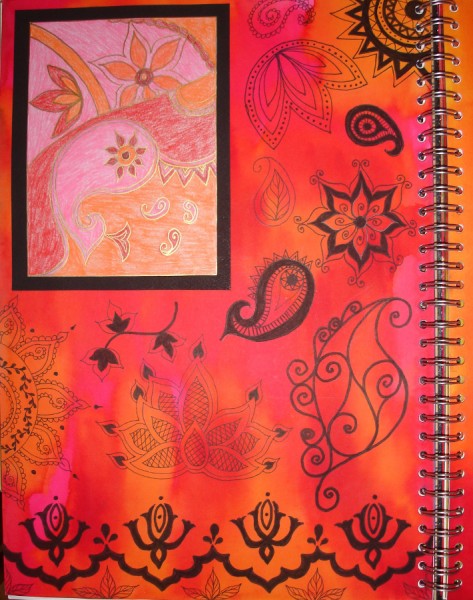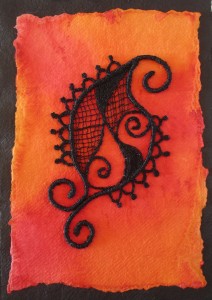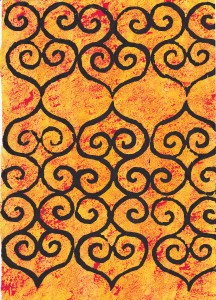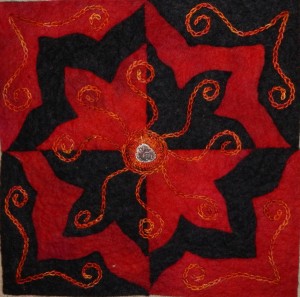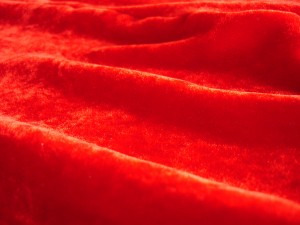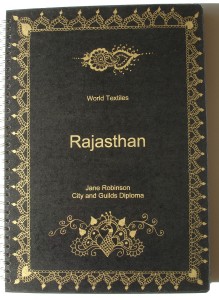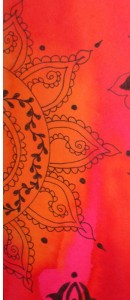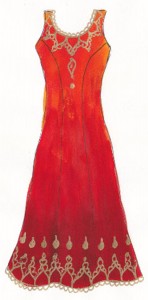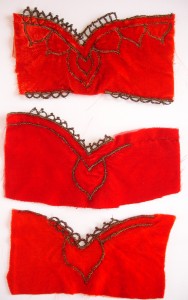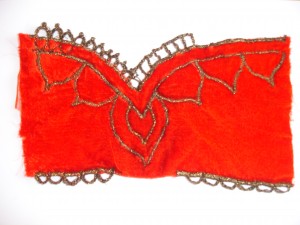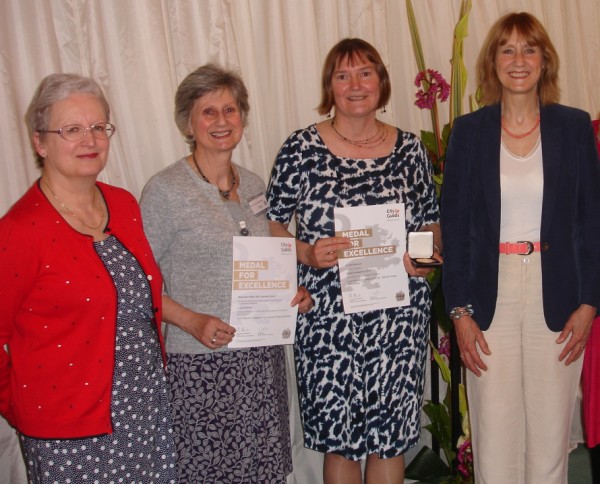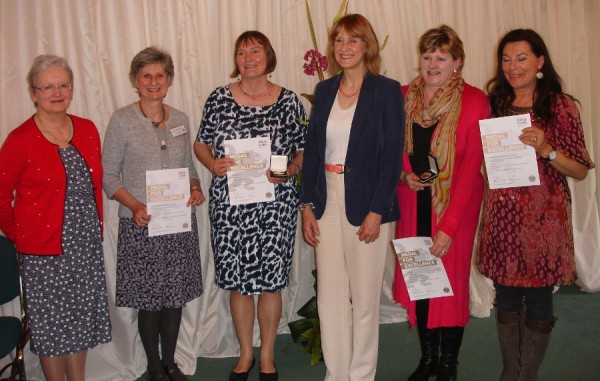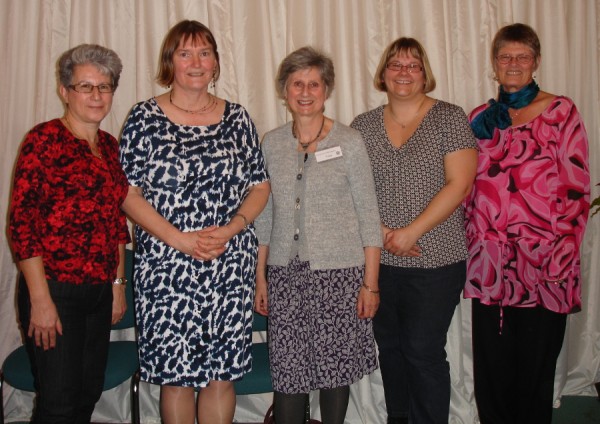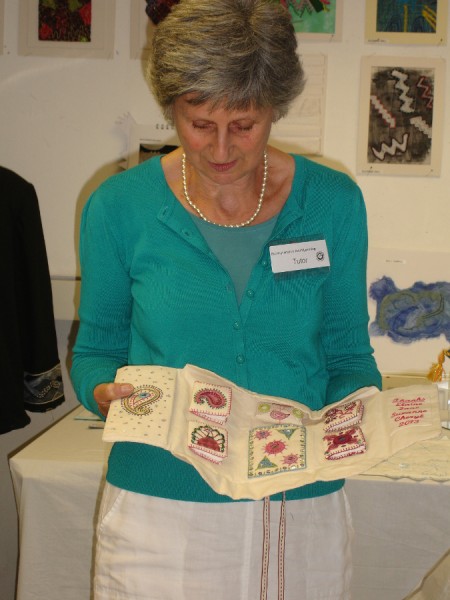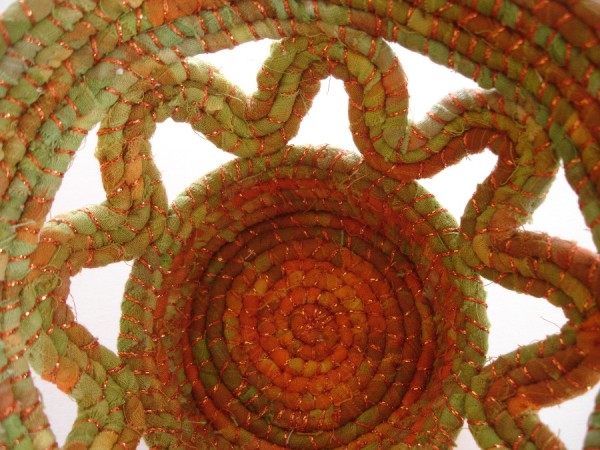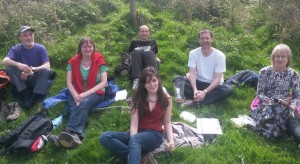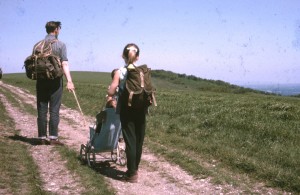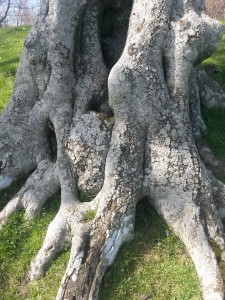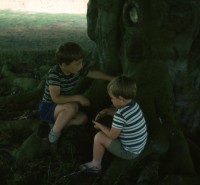There has been alot of interest in my previous post, ‘Reclaiming Childhood’ which was about the exploitation of children in the embroidery industry in India. The exhibition of paintings by Claire Phillips will move to Worthing Museum and Art Gallery from 13th September until 24th Jan 2015. Do go and see it if you can.
Do you remember the sewing factory that collapsed in Bangladesh, The Rana Plaza? It was in the news in April 2013, when all 9-storeys collapsed, killing 1138 workers and injuring 2600. Workers in the shops and bank on the ground floor were all evacuated the day before, when big cracks appeared in the building, but garment workers on the other floors were ordered back to work the next day despite the known risk. There was shock and outrage in the Western world for a while. Then other things took over in the news, and our daily lives took over, and how often have we consciously thought about it again? There was a flurry of publicity a little while later about setting up a compensation fund for the families and survivors, and the willingness or otherwise of the big clothing companies to pay up. We are lucky to live in a country that has stricter health and safety legislation and enforcement, and prosecution of companies that breach these regulations. If something does go wrong, there is compensation, and there are state benefits and free health-care. Nothing can compensate for the loss of a loved-one, but it is in the power of the big clothing companies who used the factory to make sure that the injured and bereaved are not destitute.
Well over a year later, the compensation fund is still a long way short of the amount that should have been raised. Some companies paid up straight away, and some gave in gradually and reluctantly to public pressure. Others have yet to pay up, or have just made a small contribution that falls a long way short of what is needed. Click here to see more information about who has and hasn’t paid up, from the website of Cleanclothes.org, who campaign for fair wages and safe working conditions in the clothing and embroidery industries. http://www.cleanclothes.org/ranaplaza
Some companies have made the amount of their donations public. Some companies that had no clear link to the factory also made voluntary donations. However, others failed to pay up. One of the companies that dragged its’ heels is Matalan, who until this week were the only UK company not to have paid a penny. After considerable public pressure they finally made a donation this week, only the day before the deadline for payment and well over a year after the disaster. This is only a ‘token’ payment, to the short-term disaster-relief, not the full amount that is needed for long-term compensation. Their argument is that they stopped using the factory a few weeks before the accident. But this was for quality reasons, not humanitarian or health and safety reasons. Most garment manufacture in Bangladesh and India is done on this short-term basis, which makes health and safety harder to enforce. Another argument is that they were not found culpable (but nor where any of the other companies who used the Rana Plaza, but they have paid up anyway). Their third argument is that there is no court order forcing them to pay (but the other companies who have paid up willingly have done so without a court order). They refuse to disclose the actual amount they are offering to the fund, and without Matalan’s permission to disclose it the fund also cannot state how much they have offered. If they are as proud as they claim to be about their (reluctant, late) contribution, then why not disclose the amount? Their argument is that they ‘only’ used the Rana Plaza for a short time, although they acknowledge that this was very shortly before the disaster, and that they stopped using it for commercial reasons not for humanitarian or health and safety reasons. If every company took the same line as Matalan then there would be no compensation fund at all.











